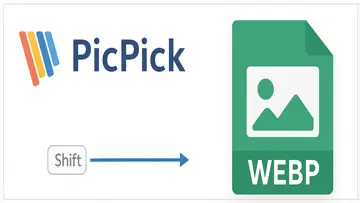Overview of GDAL
GDAL, short for Geospatial Data Abstraction Library, is an open-source software library that provides a wide variety of tools for translating and processing raster and vector geospatial data. Developed by Frank Warmerdam, GDAL is an essential tool for professionals in the fields of geography, cartography, GIS (Geographic Information Systems), remote sensing, and more. With its powerful capabilities, GDAL allows users to read, write, and manipulate geospatial data in various formats.
Key Features
- Format Support: GDAL supports a multitude of raster and vector formats such as GeoTIFF, Shapefile, KML, and many more. This extensive format support makes it an invaluable tool for users dealing with different types of geospatial data.
- Data transformation: The library includes tools for transforming coordinate systems, resampling, and warping raster data to align with different projections.
- Command-line Utility: GDAL offers a command-line interface (CLI) with various utilities that facilitate operations on geospatial data without needing to write custom code.
- API Access: Developers can access GDAL through programming languages such as C++, Python, and Java. This feature enables the integration of GDAL into custom applications.
- Raster and Vector Processing: GDAL provides capabilities for manipulating both raster and vector datasets, allowing users to apply various algorithms and processes to their data.
- Community and Documentation: With robust community support and detailed documentation, users can easily find help, tutorials, and guides to maximize their use of the library.
Installation Process
The installation of GDAL varies depending on the operating system. Below are some general steps for different platforms:
- Windows:
- Download precompiled binaries from the official GDAL website or use package managers like OSGeo4W.
- Add the GDAL installation directory to your system's PATH variable for command-line access.
- macOS:
- You can install GDAL via Homebrew by running the command: brew install gdal.
- This method ensures that any dependencies are automatically managed.
- Linux:
- GDAL can typically be installed using the package manager for your distribution. For example: sudo apt-get install gdal-bin on Debian-based systems.
- Alternatively, compile from source to customize your installation if necessary.
User Interface
GDAL primarily operates through CLI commands; however, there are several graphical user interface (GUI) options available that integrate with GDAL to enhance user experience. Popular GIS applications such as QGIS utilize GDAL libraries in their back-end processing while providing user-friendly interfaces where geospatial tasks can be executed visually.
Applications of GDAL
The versatility of GDAL makes it suitable for various applications across industries. Some of its common use cases include:
- Geospatial Data Conversion: Users often utilize GDAL to convert datasets between different formats swiftly. For instance, converting a shapefile into GeoJSON format or rasterizing vector data.
- Remote Sensing Analysis: Researchers process satellite imagery using GDAL tools to extract valuable insights such as land-use change detection or spectral analysis.
- Mosaic Creation: Users can create color-balanced mosaics from multiple raster files using GDAL’s mosaic utility functions.
- Cropping and Resampling: The capability to crop raster datasets or resample them is crucial for scene analysis or preparing data for modeling tasks.
Performance
The performance of GDAL is generally very efficient due to its ability to handle large datasets without consuming significant system resources. It employs optimized algorithms that speed up data processing tasks. Moreover, its architecture allows concurrent processing of multiple threads when executing certain operations, proving beneficial for large-scale geospatial analyses.
Caveats
Despite its robust capabilities, users should be aware of some limitations and learning curves associated with the use of GDAL:
- Complexity: For beginners in geospatial analysis or programming, mastering the command-line interface may feel daunting at first due to its command structure.
- Error Handling: Troubleshooting errors during data processing might require a deeper understanding of geospatial concepts and computer science principles.
Community Support and Resources
The open-source nature of GDAL has fostered a thriving community dedicated to improving the library's functionalities. Key resources include:
- Official GDAL Website: This site contains comprehensive documentation along with download links for various platforms.
- GIS Stack Exchange Forum: A platform where users can ask questions and share knowledge about geospatial analysis using GDAL.
- GitHub Repository: Users can access source code, report issues, or contribute directly to the development of GDAL from this repository.
The Geospatial Data Abstraction Library (GDAL) remains among the most powerful tools in the domain of geospatial data processing. Its extensive format support and diverse capabilities make it a go-to solution for GIS analysts and developers alike. By bridging various formats and allowing seamless manipulation of spatial datasets, GDAL stands out as a cornerstone in modern geospatial technology. With ongoing contributions from its user community, it continues to evolve while meeting the changing needs of professionals across various sectors.
概述
GDAL 是在由Frank Warmerdam開發類別 Development Open Source 軟體。
最新版本是 GDAL 的目前未知。 它最初被添加到我們的資料庫 2009/10/16 上。
GDAL 在下列作業系統上運行: Windows。
GDAL 已不被評為由我們使用者尚未。
評測
|
|
WPS Office
WPS Office:滿足您所有需求的多功能辦公套件 |
|
|
Adobe Photoshop
終極照片編輯軟體:Adobe Photoshop 評論 |
|
|
Adobe Flash Player NPAPI
Adobe Flash Player NPAPI:多媒體網頁瀏覽的必備軟體 |
|
|
Microsoft Visual Studio 2010 Tools for Office Runtime Language Pack
使用語言包增強 Microsoft Visual Studio 的功能 |
|
|
Microsoft Visual Studio 2010 Tools for Office Runtime
使用 Microsoft Visual Studio 2010 運行時提升您的辦公工具 |
|
|
AIMP
用AIMP增強您的音樂體驗! |
|
|
UpdateStar Premium Edition
UpdateStar Premium Edition:管理軟體更新的實用工具 UpdateStar Premium Edition 是一種軟體管理工具,旨在通過確保您的程式是最新的,説明您的 PC 保持最佳狀態。它可以處理從掃描過時軟體到提供個人化推薦,甚至備份您的配置以便在需要時恢復設置的所有事情。仔細查看自動更新功能 : 此功能會自動掃描您的電腦以查找過時的程式,只需按下即可説明您更新它們。無需再尋找每個應用程式的最新版本。軟體資料庫: UpdateStar … |
|
|
Microsoft Visual C++ 2015 Redistributable Package
Microsoft Visual C++ 2015 Redistributable Package 是 Microsoft 创建的軟體元件。它為使用者提供了運行使用 Visual Studio 2015 創建的應用程式所需的運行時元件。此可再發行元件組件組件旨在使開發人員能夠更輕鬆地在系統上部署其應用程式,而不必擔心是否已安裝所需的運行時元件。該包包括 Microsoft 基礎類 (MFC)、Visual C++ CRT 和標準 C++ 等庫。如果沒有這些庫,使用 … |
|
|
Microsoft Edge
發現增強的 Microsoft Edge 瀏覽器:您的終極 Web 導航工具 Microsoft Edge 仍然是頂級 Web 瀏覽器,在速度、安全性和與 Microsoft 生態系統的無縫集成之間實現了最佳平衡。它在 Chromium 引擎上重建,提供令人印象深刻的性能,同時保持時尚和使用者友好的介面。 Microsoft Edge 的主要功能和優勢 高速性能: 借助基於 Chromium 的引擎,體驗快速的網頁載入時間,使流覽更流暢、更高效。 增強的安全性:使用 … |
|
|
Google Chrome
Google Chrome評論:快速、靈活且安全的網路瀏覽器 Google Chrome 是領先的網路瀏覽器之一,以其速度、簡單性和豐富的功能集而聞名。Chrome 由Google開發,利用 Webkit(及其分支 Blink)等開源技術來提供高性能的 HTML 渲染,確保跨設備的無縫瀏覽體驗。 Chrome 的創新使用者介面採用簡約設計,將標籤頁放置在窗口頂部,以最大限度地利用 Web 內容的螢幕空間。集成的多功能框結合了位址和搜索功能,可智慧區分 URL … |
|
|
Microsoft Visual C++ 2010 Redistributable
評論:Microsoft Visual C++ 2010 Redistributable by Microsoft Microsoft Visual C++ 2010 Redistributable 是由 Microsoft 開發的軟體應用程式,它為使用 Microsoft Visual C++ 2010 構建的程式提供運行時元件。在未安裝 Visual C++ 2010 的電腦上執行使用此版本的 Visual … |
|
|
Microsoft Update Health Tools
Microsoft Update Health Tools 是由 Microsoft Corporation 開發的軟體應用程式,可説明使用者解決和修復與設備上的 Windows Update 相關的問題。作為 Microsoft 對改善 Windows 更新體驗的持續承諾的一部分,更新運行狀況工具旨在簡化診斷和解決更新相關問題的過程。 Microsoft 更新運行狀況工具的一個關鍵功能是它能夠檢測可能阻止 Windows … |





